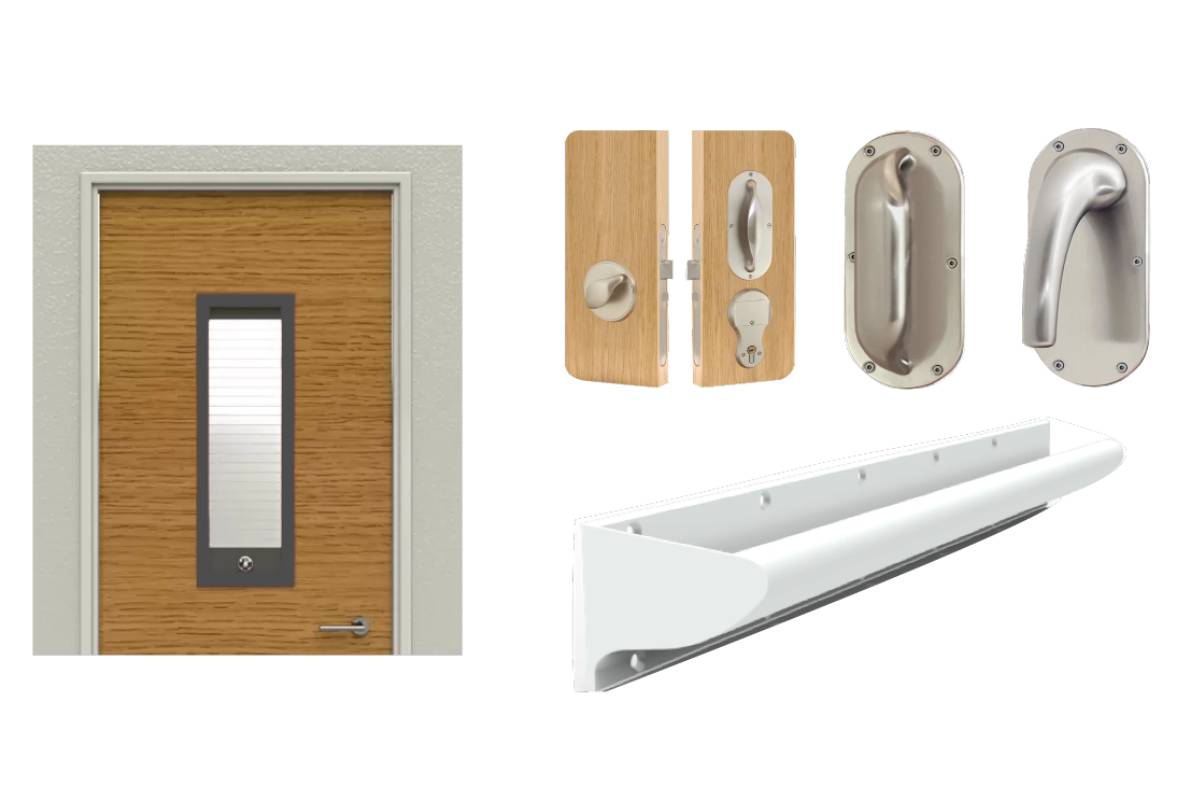Anti-Ligature Devices: Ensuring Safety and Security

In a nutshell, anti-ligature devices are implemented to stop people from self-harming others either intentionally or by accident. They are much more common than you may think and probably encounter them daily without even realizing it.
What is anti-ligature devices?
In environments where safety is paramount, such as mental health facilities, correctional facilities, and schools, the implementation of anti-ligature devices is crucial to preventing self-harm and promoting a secure environment. These specialized devices are ingeniously designed to eliminate ligature points, reducing the risk of harm to individuals and creating a safer space for all. In this article, we will explore different types of anti-ligature devices and their significance in safeguarding vulnerable individuals.
Where are anti-ligature devices used:
Anti-ligature devices are used in many places, particularly in hospitals, care homes, schools, and children’s nurseries. Anti-ligature devices are usually tamper-proof. This means that they cannot be interfered with or removed from the locations where they have been placed. This is for very good reasons as they can sometimes mean the difference between life and death for some people.
Who uses anti-ligature devices?
In addition, these small devices have the added benefit of enhancing security in households and offices. Care homes in which people need specialized care usually need a wide range of these devices. This is because some elderly or infirm people can find it difficult to use conventional keys due to arthritis and so on. These devices also ensure that people who are residing or working in a particular environment are only given access to the things to which they are allowed to access. For example, in cases where an individual handles drugs, anti-ligature door knobs can be installed to ensure that the person who is occupying this location is unable to access these drugs, whilst ensuring that they remain secure.
Types of anti-ligature devices:
There are many forms of anti-ligature devices. These range from door knobs, window frames, hooks, curtain rails, and handles. The type of device required for a particular person very much depends on the circumstances they are in. For example, it is a legal requirement that all hospitals have anti-ligature looks as well as devices attached to the windows, whereas there are no legal requirements whatsoever in care homes in the United Kingdom.
Other forms of anti-ligature devices are geared towards ensuring that the surfaces where human beings operate are safe, smoke detectors for example. Anti-ligature devices are also used in prisons and areas where there might be a risk of fire.
1. Ligature-Resistant Fixtures
Ligature-resistant fixtures, such as faucets, showerheads, and grab bars, are designed with rounded edges and concealed mounting screws, eliminating potential anchor points for ligatures. By removing points of attachment, these fixtures significantly reduce the risk of self-harm or harm to others.
2. Anti-Ligature Door Hardware
Anti-ligature door hardware, including hinges, anti-ligature door handles, and locks, is designed to prevent the attachment of ligatures, belts, or clothing. Specialized designs with recessed or tamper-resistant features help mitigate risks and ensure the safety of individuals.
3. Anti-Ligature Curtain and Blind Systems
Traditional curtains and blind cords pose significant risks of strangulation. Anti-ligature curtain and blind systems employ breakaway mechanisms or cordless designs, eliminating potential hazards and promoting a safer environment.
4. Ligature-Resistant Furniture
Incorporating ligature-resistant furniture, such as beds, tables, and chairs, is essential in environments where self-harm risks are prevalent. These furniture pieces are crafted with smooth edges, minimal crevices, and tamper-resistant components, reducing ligature points and ensuring maximum safety.
5. Suicide-Resistant Lighting:
Suicide-resistant lighting fixtures use tamper-resistant materials and designs, ensuring that light fixtures cannot be easily dismantled or used as potential ligature points.
6. Anti-Ligature Mirrors:
Anti-ligature mirrors feature breakaway materials or protective casings to prevent breakage and potential harm.
7. Anti-Ligature Grab Rails:
Anti-ligature grab rails are designed with rounded edges and tamper-resistant fixtures, reducing the risk of self-harm while providing support and stability.
8. Anti-Ligature TV Enclosures:
TV enclosures with ligature-resistant features protect individuals and equipment from harm while ensuring entertainment and information access.
9. Anti-Ligature Bathroom Accessories:
Bathroom accessories, such as soap dispensers and toilet paper holders, can be adapted with anti-ligature features, enhancing safety in critical areas.
10. Anti-Ligature Vent Covers:
Vent covers with specialized designs prevent the attachment of ligatures, reducing potential self-harm risks while maintaining proper ventilation.
Where to buy: Buy Anti-ligature devices from here.
Conclusion:
Implementing anti-ligature devices is paramount in creating safe environments in mental health facilities, correctional facilities, schools, and other high-risk settings. These devices, ranging from ligature-resistant fixtures to specialized furniture, significantly reduce the risk of self-harm and enhance the safety of vulnerable individuals. By eliminating ligature points, these devices promote a secure environment where individuals can focus on healing and growth without unnecessary risks. Embracing anti-ligature measures showcases a commitment to ensuring the well-being of all, making these devices essential components in safeguarding individuals and creating a more secure future.
Also Read: The Psychology of Happiness and How it Relates to Lifestyle Choices